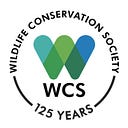WCS 3-Sentence Science
Protecting Dead Parrots to Conserve the Living
November 22, 2019
Each year, Wildlife Conservation Society scientists publish more than 300 peer-reviewed studies and papers. “WCS 3-Sentence Science” is a regular tip-sheet — in bite sized helpings — of some of this published work.
Here we present work by the WCS Papua New Guinea program on the impact to Pesquet’s parrots from the harvesting of their feathers for ritual ceremony in PNG.
- The red feathers of Pesquet’s Parrot (Psittrichas fulgidus) are highly sought after for use in the ceremonial headdresses of the highland cultures of Papuan New Guinea, however, it is unclear whether the harvest for headdresses represents a serious threat to the species’ survival.
- Using a combination of surveying techniques and mathematical methods the researchers revealed around 8 percent of the estimated wild population of Pesquet’s Parrots would likely be harvested annually just for Kerowagi district alone.
- Given that a greater number of Pesquet’s Parrot exist in headdresses than are alive in the wild, the researchers suggest that the most practical and cost effective intervention would be to focus on prolonging the lifespan of existing headdresses rather than attempting to protect the species from hunting in remote areas of forest.
Study and Journal: “More dead than alive: harvest for ceremonial headdresses threatens Pesquet’s Parrot in Papua New Guinea” from Emu — Austral Ornithology
WCS Co-Author(s): Grace Nugi (Lead), WCS Papua New Guinea program; Nathan Whitmore, WCS Papua New Guinea program
For more information, contact: Stephen Sautner, 718–220–3682, ssautner@wcs.org.
